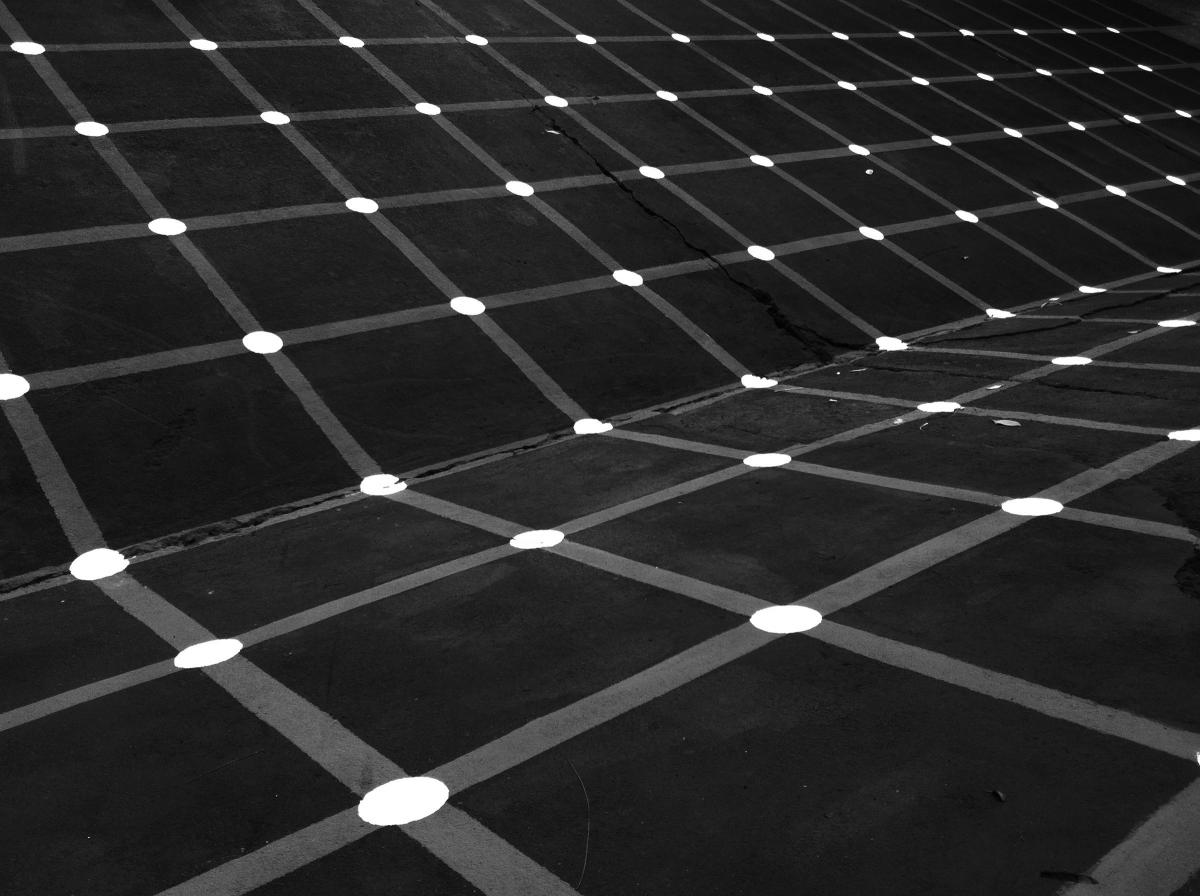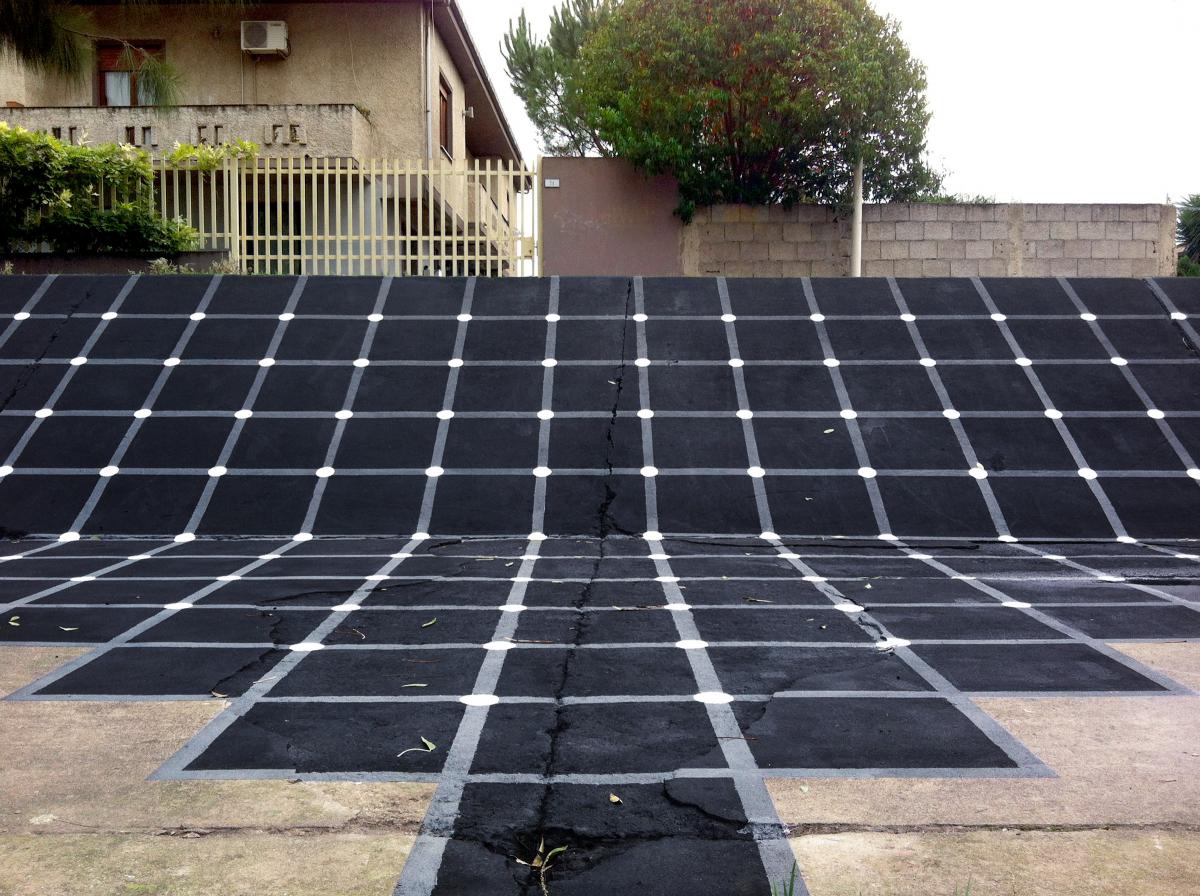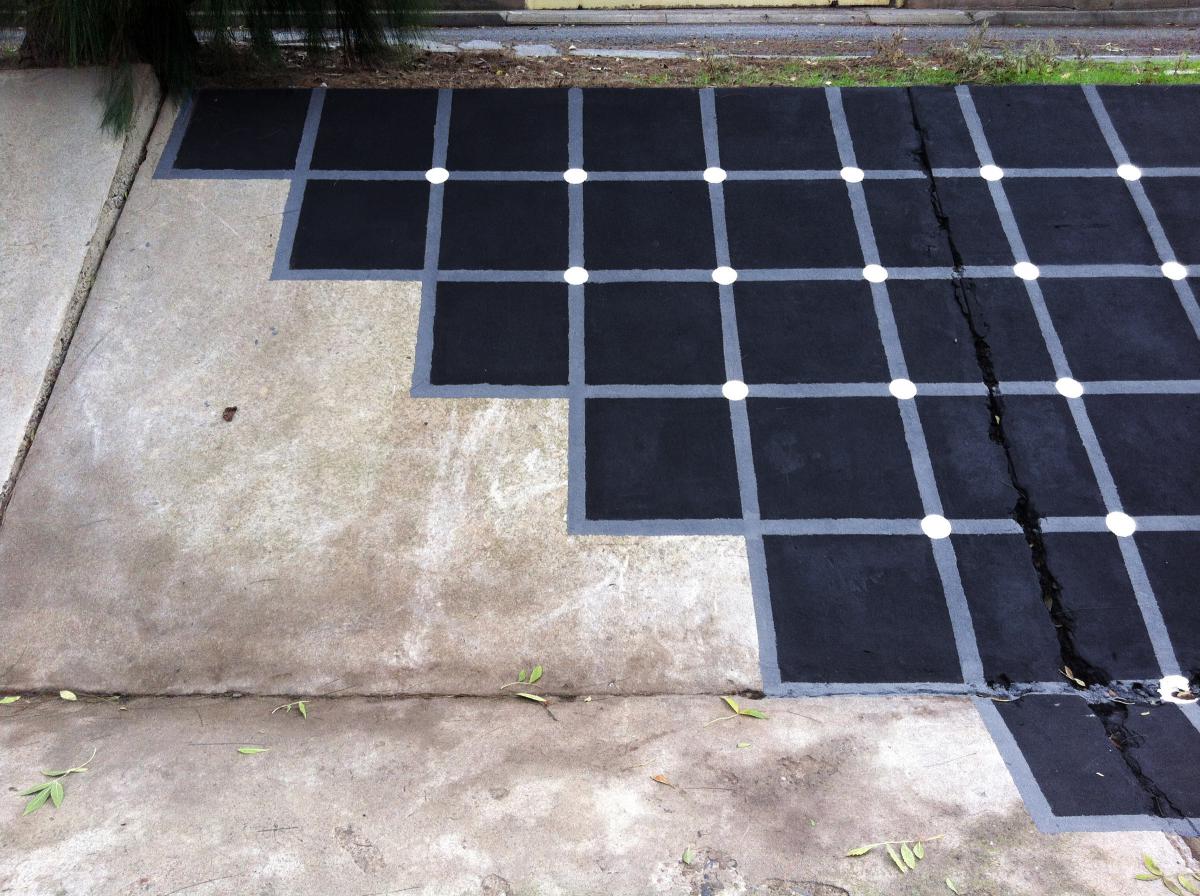The work Superimposed reveals a special phenomenon of human perception in public space. The different levels of the work each reveal their own reality, relationality and aesthetics to the viewer. The first level refers to the place itself, its surface, its surroundings and its past and present function. The second level describes the connection of the place with the work. The grid structure applied to a curved concrete surface is in its form reminiscent of early computer graphics and appears here as a metaphor for virtual reality. The third level is the impressive scintillation effect, in a sense a further development or reinforcement of Hermann's grid. Unlike most optical effects, this one is accessible to everyone, cannot be suppressed or attenuated by concentration and focused perception and reveals convincing insights into the divergence of reality and perception.
Neither hermetically nor superficially does the effect address both scientific and philosophical questions. For the flickering grid does not merely formally present itself as a model of neuronal activity or binary logic; in fact, part of the effect is based on the effects of simple logical neural circuits at the retinal level, the so-called lateral inhibition. However, the principle of lateral inhibition is not sufficient to explain this effect in a completely plausible way. Higher cognitive processes also seem to be involved here. What is special about this is that we experience the paradox that what we are currently seeing is not what is actually present, and since we can perceive both synchronously, we know about this contradiction. The work Superimposed, like reality in general, constantly generates itself as we watch it, it is always new and always relative.
Neither hermetically nor superficially does the effect address both scientific and philosophical questions. For the flickering grid does not merely formally present itself as a model of neuronal activity or binary logic; in fact, part of the effect is based on the effects of simple logical neural circuits at the retinal level, the so-called lateral inhibition. However, the principle of lateral inhibition is not sufficient to explain this effect in a completely plausible way. Higher cognitive processes also seem to be involved here. What is special about this is that we experience the paradox that what we are currently seeing is not what is actually present, and since we can perceive both synchronously, we know about this contradiction. The work Superimposed, like reality in general, constantly generates itself as we watch it, it is always new and always relative.
| Details | |
|---|---|
| Artwork | Superimposed, 2012 |
| Material | paint on concrete |
| Dimension | approx. 11.5 m x 6 m |
| Site | San Sperate, Sardinia |
| Collaboration | with Roman Hahlbrock |


